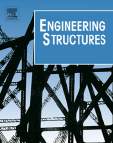
| Tipo de publicación | Articulo |
|---|---|
| Año de publicación | 2015 |
| Autor(es) | Aguilar, R., Marques, R., Sovero, K., Martel, C., Trujillano, F. & Boroschek, R. |
| Edición | Elsevier |
| Número de páginas | 18 |
The conservation of archaeological heritage is of major importance for preserving the scientific, ethnographic and artistic values of past cultures. Once archaeological sites are exposed after being buried for centuries, they are subjected to natural hazards, which should be studied with up-to-date techniques. Moreover, conservation works are primarily focused on aesthetic aspects or on solving localized problems. In earthquake-prone areas, it is of extreme importance to carry out structural analysis studies for assessing the actual behaviour of archaeological constructions, and for proposing adequate intervention measures. This paper presents an extensive study on structural behaviour of archaeological building remains in Peru, based on in-situ non-destructive testing as well as on numerical approaches. The case of the Chokepukio Archaeological Site is presented, which was built between 1000 and 1450 AD in the Pre-Columbian era, with a mixed masonry of stone units and earthen mortar. The paper begins with a comprehensive description of the historical, architectural and structural aspects of the archaeological site. The possibility of applying operational modal analysis tests is then explored with reference to a representative wall of Chokepukio. The results of the experimental field campaign are used to develop calibrated finite element models of the wall, and to indirectly estimate mechanical characteristics of the masonry. Basing on the investigations performed, potential failure mechanisms are identified for the wall and validated by pushover analysis. Finally, the mechanisms are evaluated through kinematic limit analysis, to proceed with the seismic assessment.